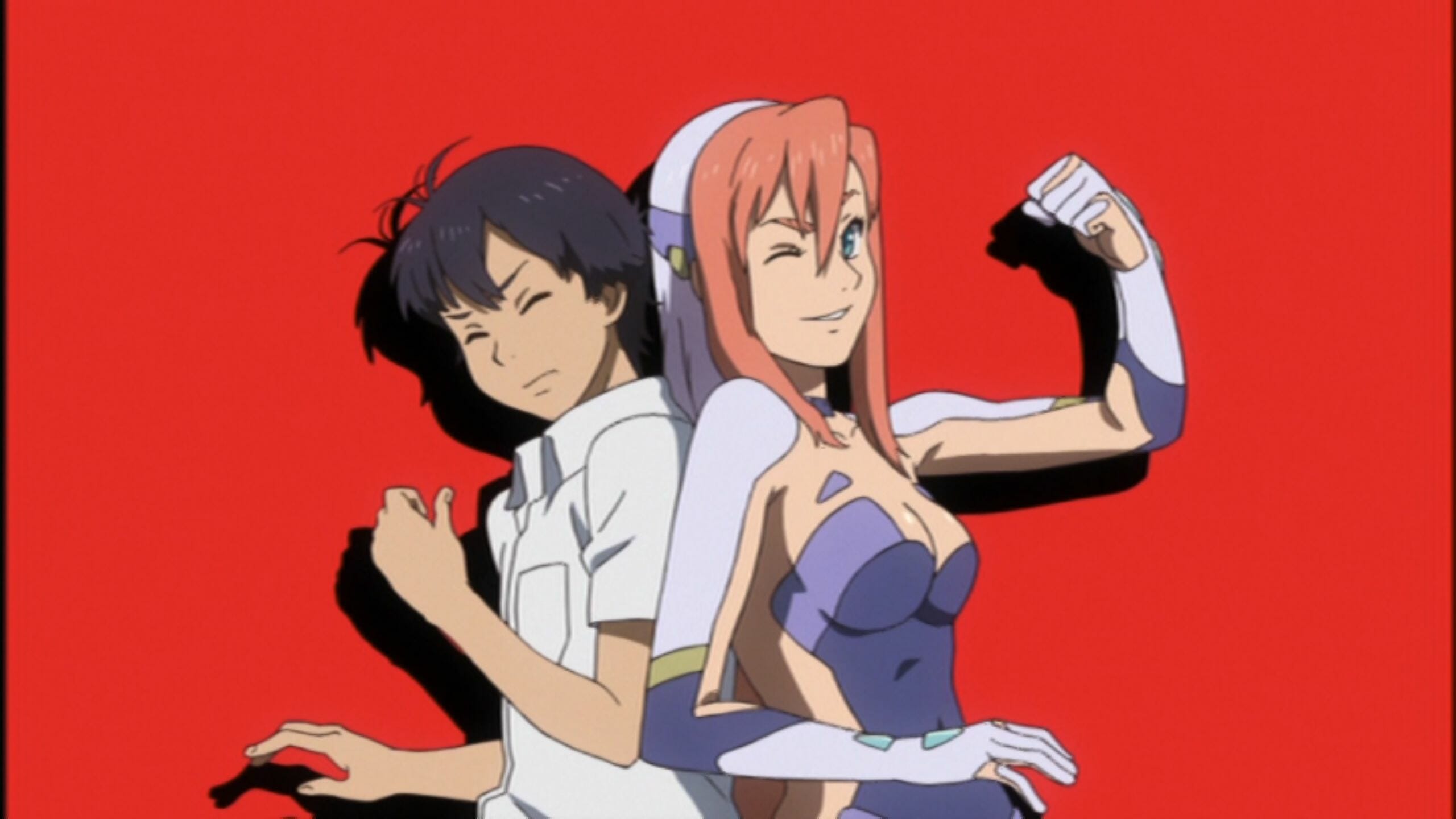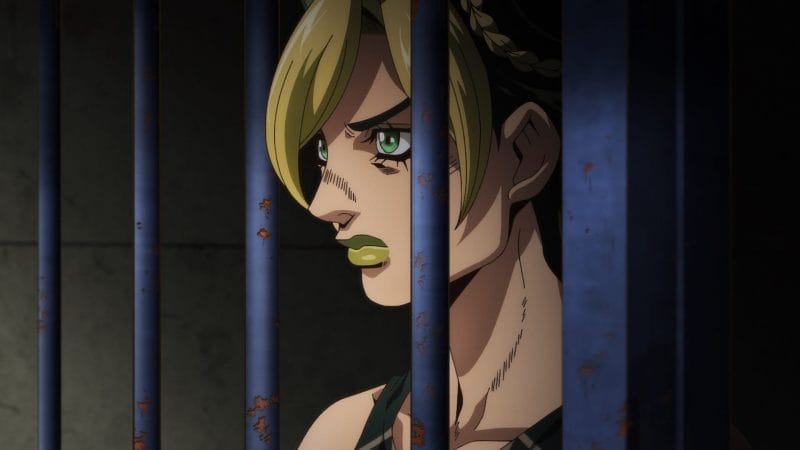Editor: Madeline Blondeau
The premise of Birdy the Mighty is simple. Tsutomu Senkawa is a studious high school student from Earth. Birdy is a brash, super-strong alien cop. Forced by circumstance to share the same body, they fight crime. Pretty straightforward, right? Exposition fripperies be damned, it’s an acceptable framing device for exciting action sequences, high school drama, and some light fan service.
But Birdy had a tough time getting off the ground. Masami Yuuki, best known for drawing the Patlabor manga, abandoned the initial run in Shonen Sunday after just one volume. A Birdy the Mighty anime OVA directed by Ninja Scroll’s Yoshiaki Kawajiri earned its share of fans but was pointedly framed as the first part of an incomplete story. Yuuki eventually returned to the world of Birdy the Mighty, drawing thirty-three volumes across Weekly Young Sunday and Weekly Big Comic Spirits.
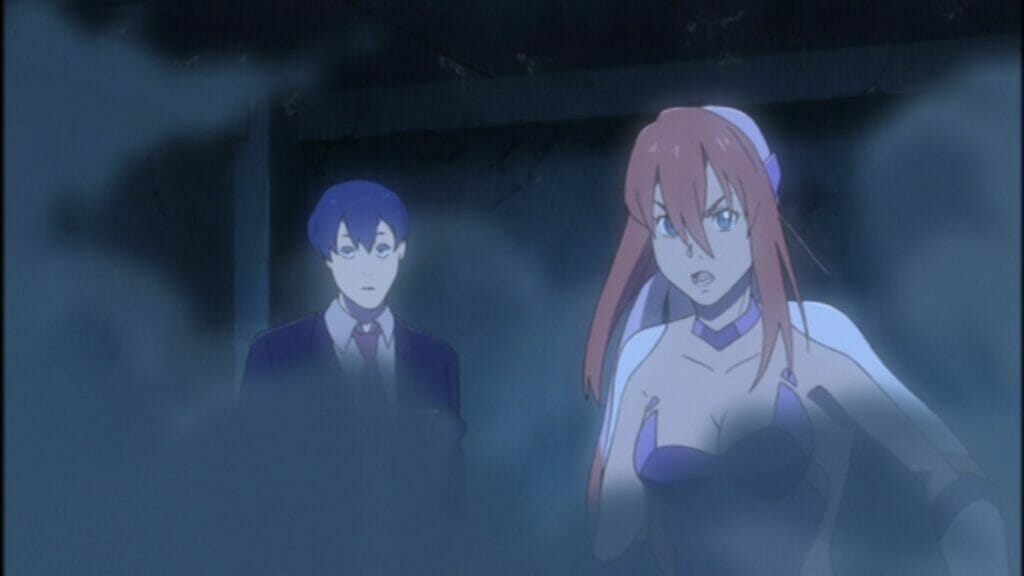
In 2008, Birdy was given a late aughts facelift. Then-new anime studio A-1 Pictures, created by Aniplex under the greater Sony umbrella, was tapped to produce Birdy the Mighty: Decode. Kazuki Akane, director of the 90s anime classic Vision of Escaflowne, was hired to reinvent Birdy for a modern audience. He was assisted by scriptwriter Hiroshi Onogi, who Akane had previously worked with on the ambitious science fiction series Noein – to your other self. Best of all, the young web animator Ryo-timo was appointed character designer and chief animation director. The new Birdy would iterate on the experimental web animation that Ryo-timo and his peers had first practiced in Noein.
The first season of Birdy the Mighty: Decode is a charming action series with a number of excellent fight scenes. It also has a killer main theme, courtesy of future Jojo composer Yugo Kanno. But the show isn’t an unqualified success. It’s too focused on Tsutomu, who is much less fun to watch than his headstrong partner Birdy. The final confrontation, too, can’t help but disappoint compared to earlier episodes. As an agile, hard-hitting combatant, Birdy is at her best fighting other humanoids rather than a big final boss. These many small weaknesses define a project that was entertaining but by no means memorable. Then its sequel, Decode 02, changed everything.
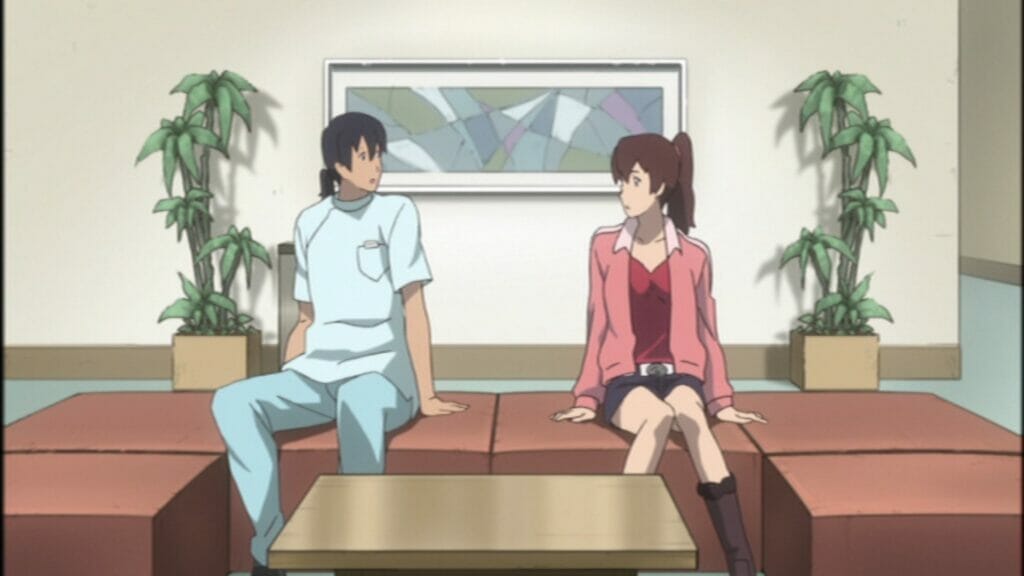
The first season of Decode ends with the destruction of Tokyo’s Roppongi district and the deaths of many of its inhabitants. Another series might have picked up months or even years after the incident, moving on to new and exciting adventures. But the second season of Decode puts the aftermath of Roppongi’s destruction front and center. Tsutomu’s classmates choose to interview refugees from the district for a school project. The show’s new villains, prison escapees affiliated with a terrorist cell, are directly responsible for the development and release of the Ryunka in Tokyo, their hands dirty with the blood of Japanese citizens. Birdy’s childhood friend Nataru is a survivor of the Roppongi attack, who witnessed his best friend crumble in front of his eyes.
Nataru is easily the standout character of Decode 02. He is introduced as a male nurse with a past history with Birdy. As early as the second episode, we learn that he is also a vigilante killer hunting the perpetrators of the Roppongi disaster. While Birdy follows the rule of law in persecuting criminals, Nataru slaughters his victims slowly and painfully. Drawing upon killing strength ruins his body and poisons his mind. As Nataru dissociates from the world, he becomes a warped mirror of Birdy, lashing out at his friends and family.
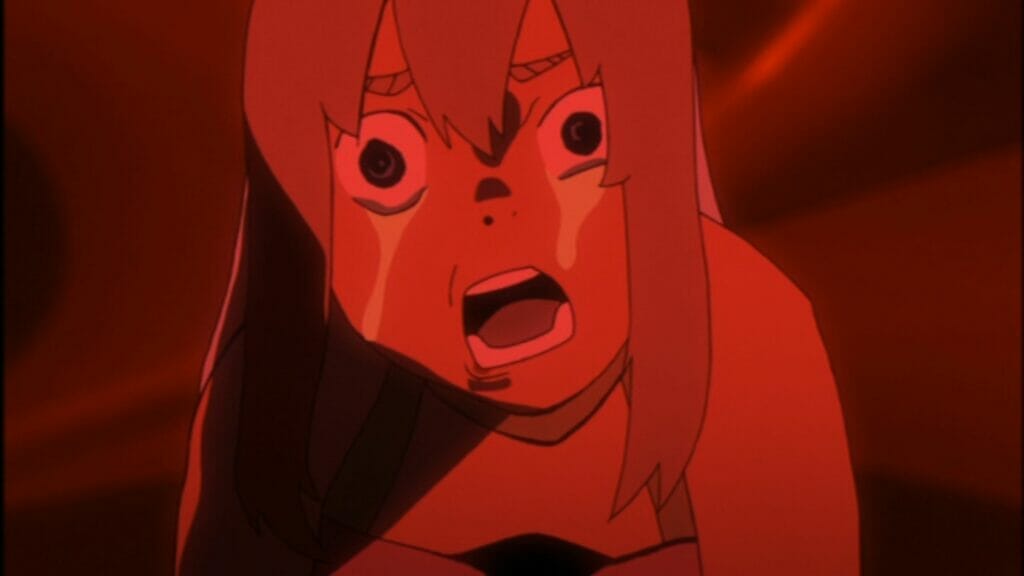
Decode 02 is a story about violence and its aftereffects. Birdy, for instance, is not just a cop. She’s the childhood survivor of a terrorist attack that scarred her so deeply that she has yet to process it as an adult. Nataru’s adopted father was an active participant in that attack, and yet has sworn off violence completely. The prison escapees include gleeful psychopaths, trained soldiers and coddled scientists disgusted by the sight of blood. Not one of them is cannon fodder. Every death leaves a scar behind.
Decode 02’s action direction is even more effective than the first season’s. Battles are fought between human-sized opponents who take advantage of individual skill and terrain. Each fight is meaningful and has lasting consequences. Meanwhile, the animation becomes increasingly grotesque. Escaped prisoners blast soldiers into chunks of meat. Nataru tears limbs, crushes heads, and mutilates his victims while they are still alive. Even Birdy is stretched to the limits of her endurance.
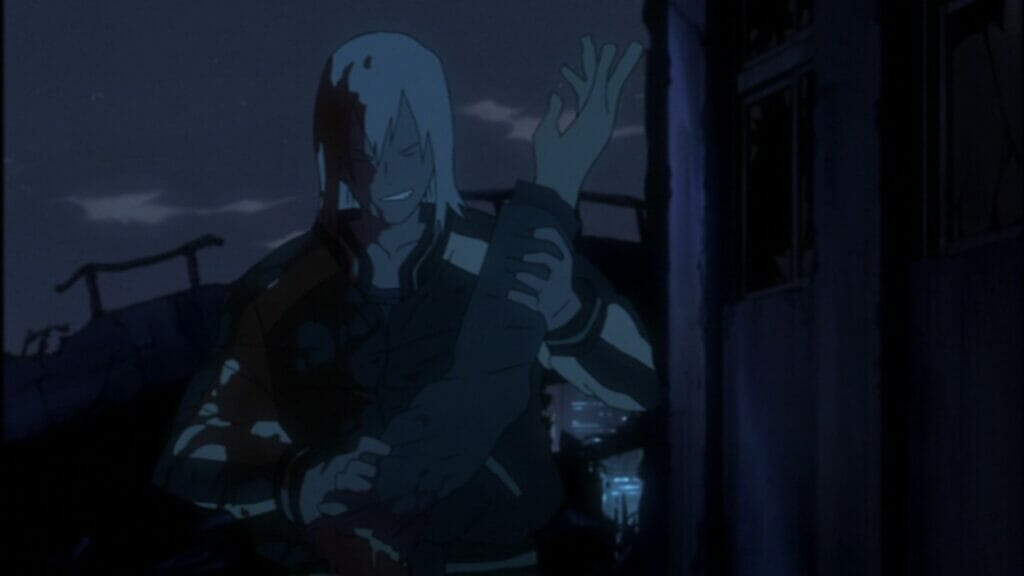
If Birdy was just impressive on a story level, it may well have earned its place as a cult object. But Decode 02 is also a notable achievement in animation. Ryo-timo and his crew took what they learned in the first season to create more dynamic sequences in the second. This included members of the “webgen” movement like Shingo Yamashita, a fan-favorite animator who broke through to the mainstream with his Jujutsu Kaisen and second Ranking of Kings opening credits sequences. But Birdy also featured the likes of legendary animator Norio Matsumoto, who saw great promise in Yamashita’s generation of artists.
Decode 02’s animation showpieces are low in detail but speedy and impactful. It’s a style that cements the show’s place in anime history, predicting later successes like Yozakura Quartet: Hana no Uta and Fate/Apocrypha. It also made Decode 02 infamous at the time that it aired. As a purposefully experimental series, there was plenty of debate at the time as to whether its experiments were a success or a failure.
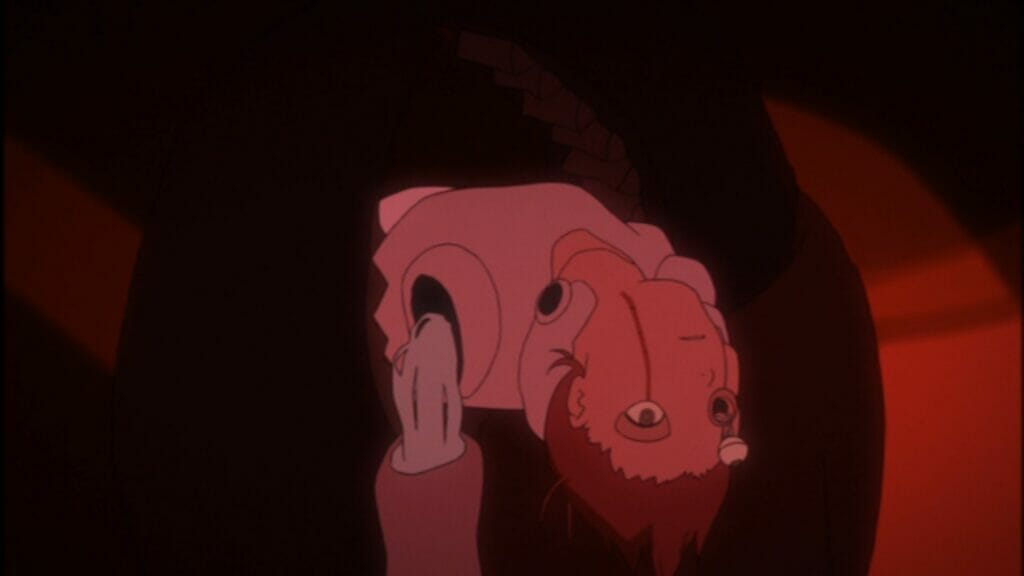
In particular, the seventh episode –which depicts Birdy’s childhood trauma hinted at earlier in the season – became a flashpoint for controversy. The episode collapses in style and frame rate as the characters themselves break down psychologically. The simplicity of the animation was meant to hammer home the characters’ instability. Instead, many viewers were convinced the series had run out of budget, that the animators were lazy, or that something behind the scenes had gone wrong.
Art is subjective, and people have different tastes when it comes to animation. I can’t speak to the feelings of other folks who disliked it at the time. What I do remember is that psgels, who wrote about Decode 02 weekly on Star Crossed Anime Blog at the time it aired, loved the entirety of episode seven. For other folks I know, who are even more invested in animation as a medium and a tool of expression than I am, the seventh episode of Decode 02 was a wake-up call that led them to think carefully about what “good” animation looked like. The techniques used in Decode 02 would be polished even further in future productions until ordinarily skittish fans came to accept them as simply the way anime is made these days. There’s something magical in Decode 02’s best scenes that only comes when talented artists push up against the limits of their chosen medium.
The single most impressive sequence in Decode 02, the climactic fight between Birdy and Nataru, perfectly unites story and animation. Birdy doesn’t want to fight Nataru, but Nataru demands to fight her. Birdy accidentally hurts Nataru, and is shocked by what she has done. Nataru hurts her in response. The two run through the ruined streets of Roppongi so quickly that their outlines can no longer contain their colors. They throw each other through buildings and kick up sparks from their feet. The music is somber, the soundtrack to a funeral rather than a final boss theme. Across the city, Tsutomu’s classmates deliver their report on the Roppongi refugees, insisting that “love is the answer.”
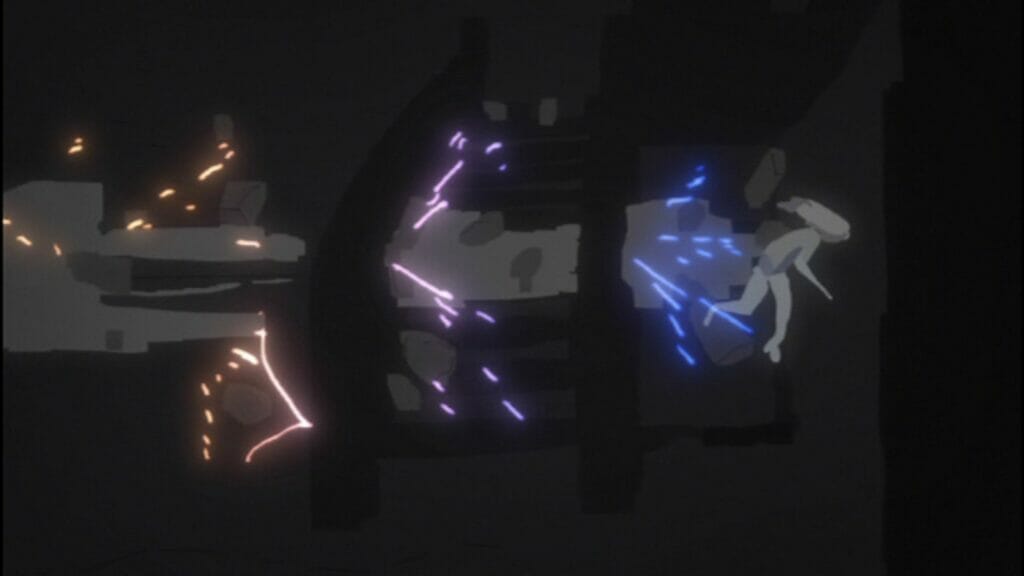
Some time ago, fans figured out that Zack Snyder ripped a climactic scene from his Superman film Man of Steel directly from Decode 02’s final battle. Zodd throws Superman through several buildings in the same way that Nataru did to Birdy. To Snyder’s credit, he does an admirable job capturing the scale and speed of Decode 02. Sadly, he misses the point. It doesn’t matter when Zodd throws Superman through a few buildings, because there’s nothing special about those buildings. Roppongi, on the other hand, means something. Decode spends its first season setting up the context for Roppongi to be destroyed. In the second season, the audience is taught what its destruction cost the city of Tokyo, who suffered in the aftermath, and what the wreckage represents. Without that context, the climax of the second season is mere spectacle. With that context, it sings.
Watching Decode 02 again for this piece, I noticed aspects of the series that did not live up to my memories. For instance, the series never interrogates whether Birdy’s actions as a cop are any more justified than Nataru’s vigilantism. Nataru himself insists at the end that his actions are not for any idealistic purpose, but because he is simply destroying things as according to his nature. It’s a solution to the show’s thorny questions about violence that, to me, reads like an easy way out. Other aspects frustrate me as well. Some characters have less to do than others, like first season remainder Capella. Nataru’s friend’s sister, Shouko, is given far more to do but very little of it is interesting. I would have loved her to interact more with Birdy herself, but this doesn’t happen until the very end.

Decode 02 also fits comfortably within Kazuki Akane’s recent body of work in that it is incomplete. The season’s end leaves a few open loose ends that were unanswered even in the original Birdy the Mighty OVA. Even more questions are raised by “The Cipher,” a bridge between season 1 and 2 that mainly offers an opportunity to see Birdy’s other self Tsutomu and his girlfriend together again. The Decode experiment may have been successful as a character-driven action series and animator’s playground, but failed in its efforts to produce a definitive take on Birdy’s story.
Even so, there’s a sensitivity in Decode 02 that still surprises me. It’s a series that has the exciting duels and whiz-bang science fiction you’d expect. But hanging over it all is the reminder that the characters we meet along the way have lost something irreplaceable. Those who survive by the story’s end are only one step along the road to healing – if they ever fully heal. Akane would carry this same philosophy to Stars Align, a sports series that is just as memorable and glaringly incomplete. Decode 02 has a higher barrier to entry, with thirteen good-but-not-great episodes to get through before it takes off in the next twelve. But I’ll never regret climbing those heights to see the wreckage of Roppongi spread out below, and what a few lost and angry souls found there.


